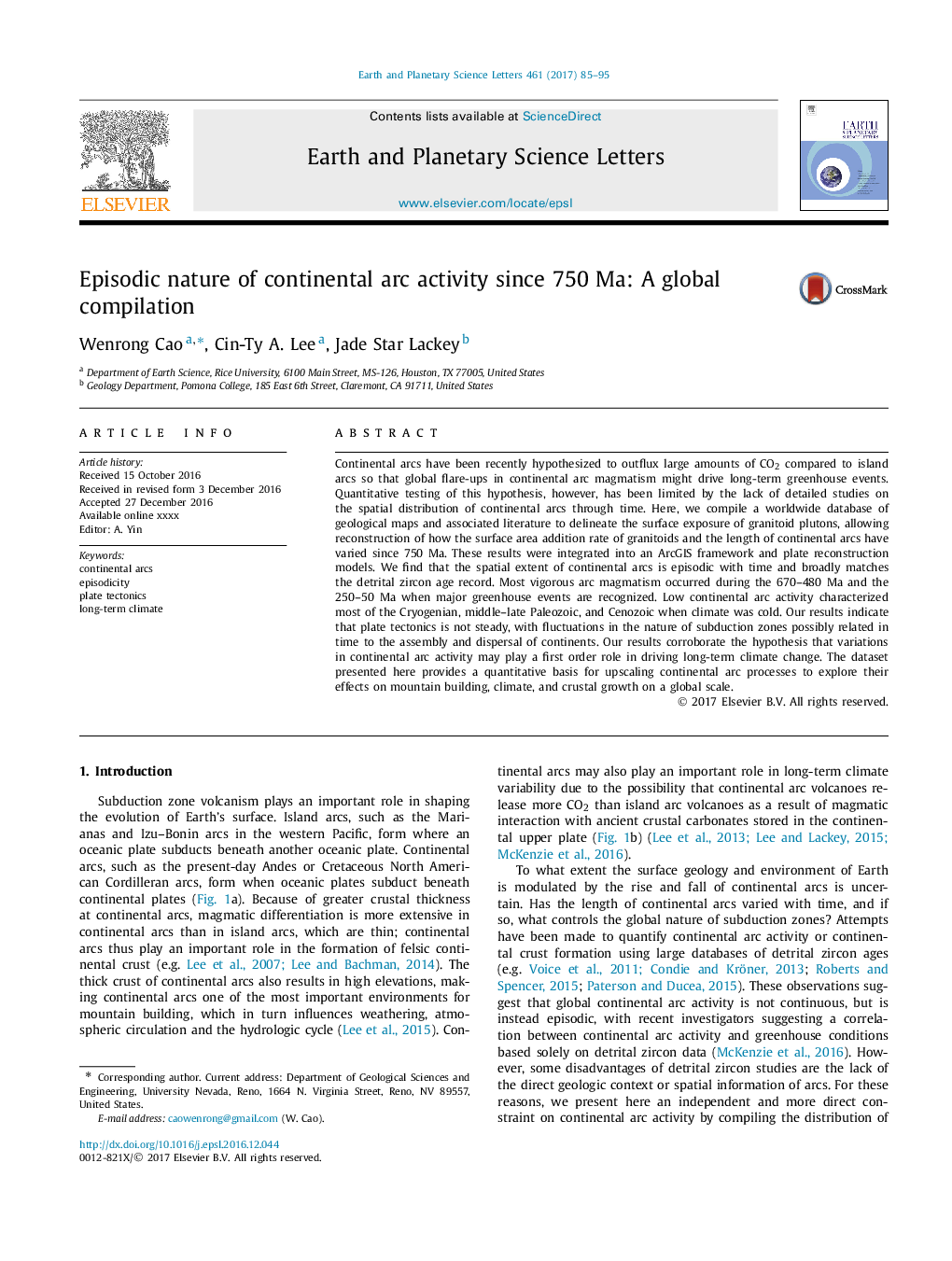| Article ID | Journal | Published Year | Pages | File Type |
|---|---|---|---|---|
| 5779800 | Earth and Planetary Science Letters | 2017 | 11 Pages |
Abstract
Continental arcs have been recently hypothesized to outflux large amounts of CO2 compared to island arcs so that global flare-ups in continental arc magmatism might drive long-term greenhouse events. Quantitative testing of this hypothesis, however, has been limited by the lack of detailed studies on the spatial distribution of continental arcs through time. Here, we compile a worldwide database of geological maps and associated literature to delineate the surface exposure of granitoid plutons, allowing reconstruction of how the surface area addition rate of granitoids and the length of continental arcs have varied since 750 Ma. These results were integrated into an ArcGIS framework and plate reconstruction models. We find that the spatial extent of continental arcs is episodic with time and broadly matches the detrital zircon age record. Most vigorous arc magmatism occurred during the 670-480 Ma and the 250-50 Ma when major greenhouse events are recognized. Low continental arc activity characterized most of the Cryogenian, middle-late Paleozoic, and Cenozoic when climate was cold. Our results indicate that plate tectonics is not steady, with fluctuations in the nature of subduction zones possibly related in time to the assembly and dispersal of continents. Our results corroborate the hypothesis that variations in continental arc activity may play a first order role in driving long-term climate change. The dataset presented here provides a quantitative basis for upscaling continental arc processes to explore their effects on mountain building, climate, and crustal growth on a global scale.
Keywords
Related Topics
Physical Sciences and Engineering
Earth and Planetary Sciences
Earth and Planetary Sciences (General)
Authors
Wenrong Cao, Cin-Ty A. Lee, Jade Star Lackey,
